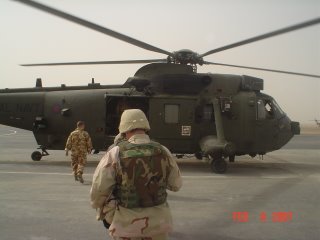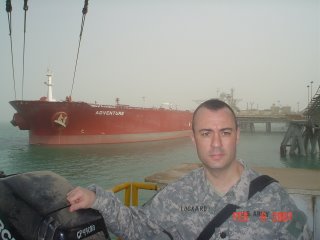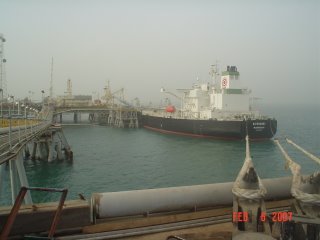Please take the time to read this article. It is from the February 10th edition of the Arab Times. Petraeus’ Mission: Iraq Is Not Real Battleground
Amir Taheri
Lt. Gen. David Petraeus, the newly appointed commander of the US forces in Iraq, begins his mission with three advantages over his predecessors.
The first is his reassuringly deep understanding of the Iraqis, their sensibilities, and their complexities.
The second is that his predecessors, especially Gen. George W. Casey Jr., a successful war leader by normal standards, have already achieved much in what matters in the long run: The creation of a new Iraqi Army capable of defending the country against internal and external foes. Finally, Petraeus arrives on the scene at a time that both the insurgency and the mischief-making Shiite militias are facing major problems.
Having failed to achieve their so-called “Ramadan Objectives”, which included the creation of an “Islamic Emirate of Iraq” somewhere in the ethnic fault-lines west of Baghdad, the insurgents are being sucked into turf wars. They are also losing some sources of funding as moderate Arab states begin to disrupt networks that raised money for jihadists in Iraq.
The broader regional picture also looks promising.
The United States’ Arab allies have rallied to create a front to oppose Tehran’s strategy of fomenting chaos in Iraq, Afghanistan and Lebanon, as part of its proxy war against Washington. The new front has succeeded in frustrating attempts by Hezbollah and its Maronite allies to topple the Lebanese government. It has also taken initiatives to stop Tehran’s domination of Hamas, thus preventing the mullahs from extending their glacis to the Palestinian territories.
Nevertheless, Petraeus still faces a number of major problems.
The most important one is uncertainty in Washington. There is little doubt that many elements within the American political elite want the US to fail for a variety of motives.At least some of those elements would do all they can, short of being charged with unpatriotic behavior, to ensure that the outcome of the war in Iraq is perceived as a defeat for the US, even if it is not so in reality.
Portraying Iraq as a failure is not hard. All that is needed is one car bomb a day and one suicide attack a week for defeat-mongers in Washington to pronounce the Petraeus mission a failure.
Uncertainty in Washington will encourage the Iraqi protagonists to hedge their bets rather than throw all their weight behind the Petraeus mission. In any war, people rally to the side that is perceived to have the highest threshold of pain, and is likely to stay the course the longest.
When Ms. Nancy Pelosi, the Democrat speaker of the House of Representatives, says that she does not consider Iraq to be “a war to win, but a situation to manage”, those Iraqis likely to side with Petraeus will think twice before doing so.
The discussion in Baghdad teahouses all past week centered on a mystery: How could so many US senators declare support for American troops in Iraq while pressing for a resolution to oppose their mission?
The one factor that can ensure Petraeus’ success is the perception that the US is united in its commitment to the new Iraq it has helped create from the ruins of the Saddamite tyranny.
The insurgents, the Al-Qaeda terrorists and the Shiite militias know that they cannot win in military terms. What they hope for is to win politically, that is to say ensuring defeat and humiliation for the United States.
Ayman Al-Zawahri, Al-Qaeda’s chief theoretician, has repeatedly said that the key aim of his so-called “jihad” in Iraq is to force the Americans to run away as the Soviets did from Afghanistan in 1989.
The reference to Afghanistan is interesting. The so-called “Arab Afghans”, of which Al-Qaeda is the most notorious group, played no more than a cameo role in driving the Soviets out. As for the Taleban, a group created by Pakistan five years after the Soviet departure, they never fought the Communists.
The Communist regime in Kabul was overthrown by an alliance of a Communist militia whose leader the Uzbek Abdul-Rashid Dostum decided to switch sides, and a Tajik guerrilla army led by Ahmad Shah Massoud.
Years later, Dostum told us that he decided to switch side when his “contacts” in Moscow told him that the new Soviet elite under Mikhail Gorbachev was no longer interested in the fate of Afghanistan.
With help from the Pakistani military, the Taleban and Al-Qaeda seized power in Kabul four years after the fall of the Communist regime. And, yet, for more than a quarter of a century jihadists of all ilks have claimed that they liberated Afghanistan and destroyed the Soviet empire.
The Iraqi version of the Taleban, plus Al-Qaeda and Shiite mischief-makers, cannot win a military victory in Iraq just as their counterparts in Afghanistan failed to achieve victory.
With a combination of intelligence, patience and determination, Petraeus can win in Baghdad.
The battleground where his chance does not appear as good is Washington. The US today has become home to a veritable industry of defeat, producing books, television documentaries, research papers, intelligence analyses, and feature movies destined for a growing market. Almost every day, there are articles assuming that the US has already been defeated in Iraq, and recommending measures to deal with the consequences of defeat. And, as in everything else, when the US does something it does it big, the defeat industry is assuming a bewildering scale.
The citizen-soldier Petraeus is certain to win in Baghdad just as Generals Tommy Frank, Rick Sanchez and Casey did in different contexts.
But will Washington allow his win to be recognized as victory?






















